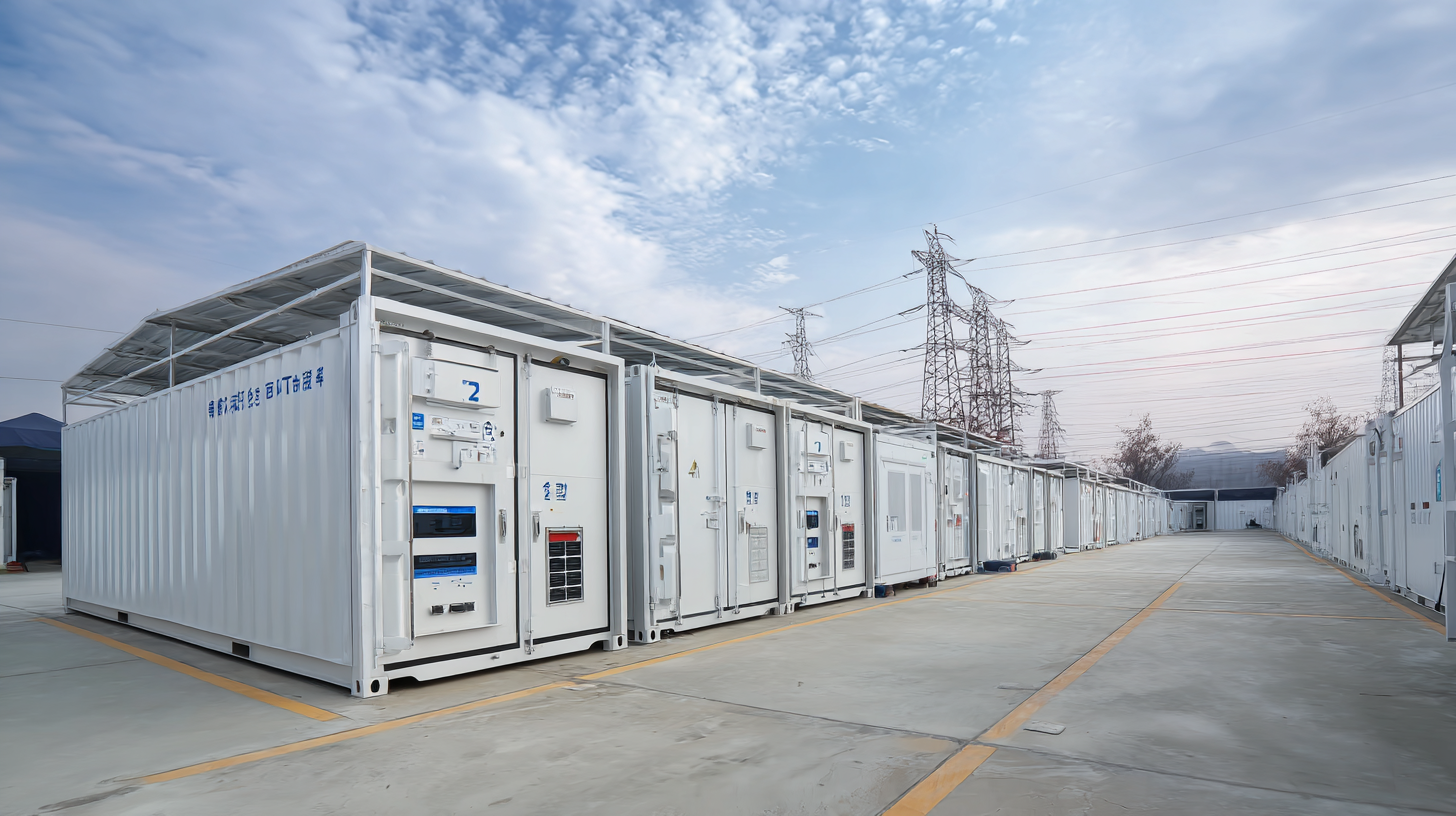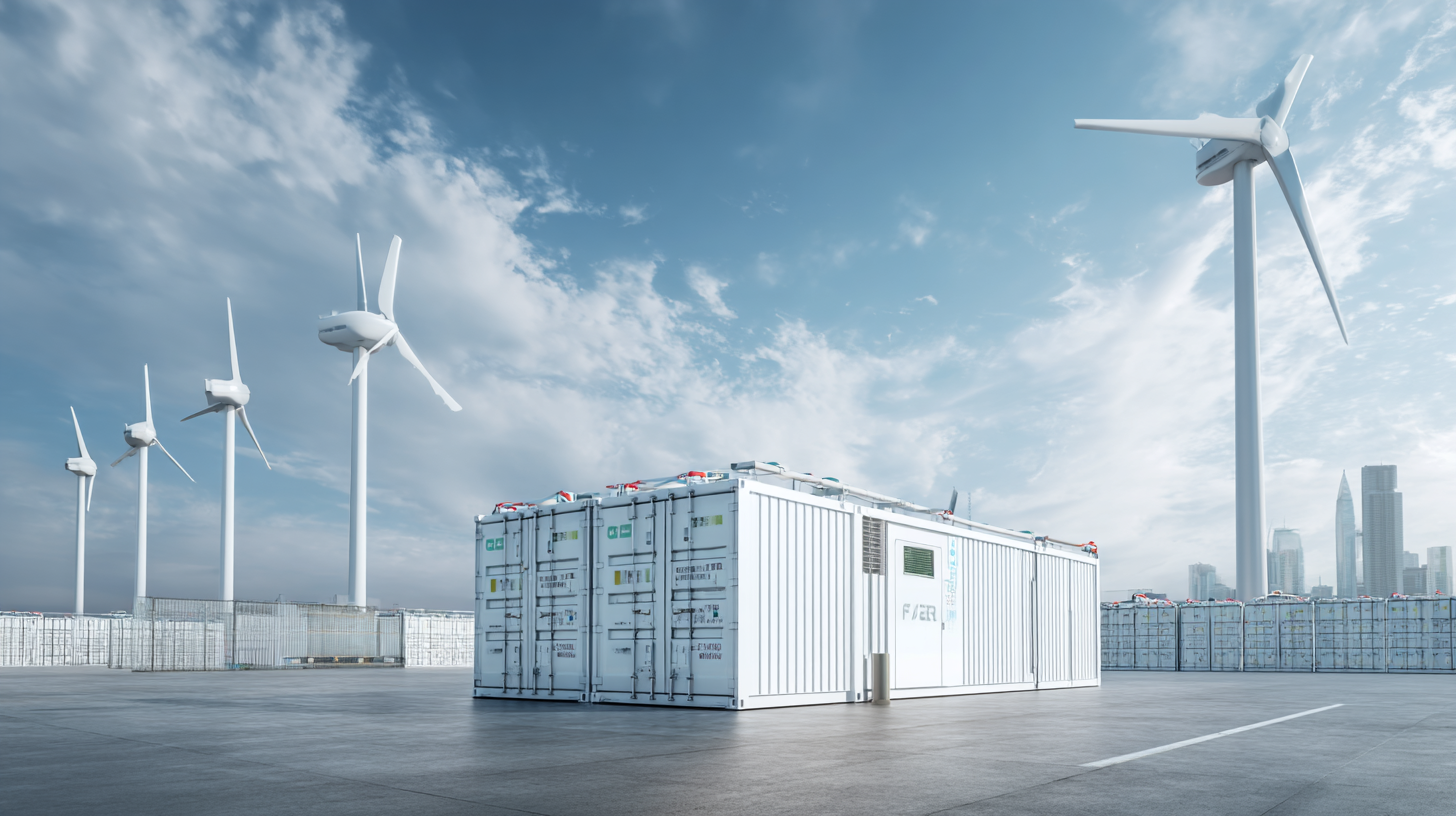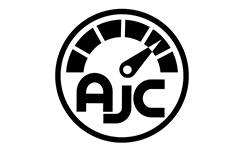Unlocking the Future of Energy Storage Innovations with 12 Battery at the 2025 China Import and Export Fair
As the global demand for renewable energy sources continues to surge, innovations in energy storage technology play a pivotal role in ensuring sustainability and efficiency. The upcoming 2025 China Import and Export Fair, specifically featuring advancements in "12 battery" technology, sets the stage for significant breakthroughs in this vital sector. According to a report by the International Energy Agency, the global battery market is projected to reach $100 billion by 2025, driven by the rapid growth in electric vehicles (EVs) and renewable energy integration. Furthermore, the need for high-capacity energy storage solutions has never been more pressing, as companies strive to enhance their grid stability and reduce carbon emissions. With developments in "12 battery" systems, which boast improved energy density and lifecycle, the potential for transforming energy consumption patterns is on the horizon, positioning China as a leading force in the energy storage landscape.

Innovative Battery Technologies Showcased at the 2025 China Import and Export Fair
The 2025 China Import and Export Fair is set to spotlight groundbreaking advancements in battery technologies that are poised to revolutionize the energy storage landscape. With the global battery market projected to reach $120 billion by 2025, innovations displayed at this event are expected to play a pivotal role in meeting the growing demands for sustainable energy solutions. Key players in the industry are showcasing next-generation lithium-sulfur and solid-state batteries, which offer significant improvements in energy density and longevity compared to traditional lithium-ion counterparts.
Moreover, according to a report by IDTechEx, energy storage systems are anticipated to achieve a compound annual growth rate (CAGR) of 20% through the next decade, driven by the increasing adoption of renewable energy sources. The fair is not just an exhibition; it promotes collaboration and knowledge sharing among manufacturers, researchers, and investors. As an industry leader, China is leading the charge towards more efficient, eco-friendly energy storage technologies that promise to enhance the performance of electric vehicles and grid storage applications, thus aligning with global sustainability goals.
Key Market Trends in Energy Storage and Their Impact on Global Trade
The energy storage sector is poised for substantial growth, with key market trends set to shape global trade dynamics. According to forecasts, the global oil storage terminal market in the UAE was valued at approximately $115.51 million in 2019 and is projected to grow at a compound annual growth rate (CAGR) of 2.94%, reaching $642.8 million by 2032. This growth underscores the increasing importance of effective energy storage solutions as global energy demands surge.
In parallel, the battery market is expected to witness significant shifts in 2024, fueled by key trends such as fluctuating metal prices and evolving geopolitical landscapes. Notably, the hydrogen trailer market is also experiencing rapid expansion, with an anticipated growth from $340.6 million in 2023 to $557.5 million by 2030, reflecting a CAGR of 7.3%. As industries adapt to these changes, innovations in energy storage technologies are crucial for meeting both consumer demand and sustainability goals, reinforcing energy storage's role as a fundamental pillar in the future of global trade.
Collaborative Efforts Between Industry Leaders to Enhance Battery Efficiency
As the global push towards energy sustainability intensifies, collaborative efforts among industry leaders are vital to enhancing battery efficiency. Recent reports highlight that the electric vehicle (EV) market is expected to grow significantly, with battery demand projected to reach over over 2,000 GWh by 2030. This surge underscores the urgency of addressing sustainability challenges throughout the entire lithium-ion battery lifecycle, from production to recycling.
To tackle these challenges, partnerships focused on innovation and sustainability are becoming more prevalent. For instance, initiatives aimed at advancing battery recycling strategies are essential, given the estimated 1.5 million tons of retired EV batteries expected to flood the market by 2025. Emphasizing circularity in battery design not only permits a reduction in raw material dependency but also reinforces environmental stewardship, aligning with global decarbonization goals.
In the context of energy storage innovations, collaborative efforts like those showcased at the
2025 China Import and Export Fair could lead to breakthroughs in battery technology that improve charging speed and increase lifespan, ultimately creating a more resilient energy infrastructure that supports the transition to clean energy across various sectors. The intersection of collaboration and innovation remains crucial for navigating the complexities of battery efficiency enhancement.

Sustainable Practices in Battery Production and Recycling for a Greener Future
The future of energy storage is being shaped by innovative practices in battery production and recycling, particularly highlighted at the 2025 China Import and Export Fair. As demand for batteries grows—projected to reach a global market value of $120 billion by 2025—sustainable practices become essential. Companies like Tesla and CATL are leading the charge by integrating eco-friendly materials and methods into their production processes. Reports indicate that over 90% of lithium-ion batteries can be recycled, a compelling statistic that underlines the potential for a circular economy within the battery industry.
Tips for a Greener Battery Future: Consider opting for products from companies that prioritize sustainable manufacturing processes. Look for certifications and corporate responsibility reports that outline their efforts in reducing carbon footprints and minimizing waste.
Incorporating recycling programs is also crucial. The International Energy Agency (IEA) notes that recycling could supply up to 20% of the raw materials needed for battery production by 2030, mitigating the environmental impact of mining. Thus, encouraging and participating in recycling initiatives can significantly contribute to sustainability in the energy sector.

Potential Applications and Real-World Benefits of Advanced Energy Storage Solutions
As the world shifts towards sustainable energy solutions, advanced energy storage technologies are poised to play a crucial role in enhancing energy efficiency and reliability. The International Energy Agency (IEA) projects that global installed battery storage capacity could reach 1,200 GWh by 2040, a significant increase compared to just 30 GWh in 2020. This growth indicates a vast potential for energy storage systems to support a more resilient electricity grid while integrating renewable energy sources such as wind and solar power.
At the 2025 China Import and Export Fair, numerous innovations in energy storage will be showcased, highlighting their potential applications across various sectors. For instance, lithium-ion batteries, which currently hold a significant market share, offer rapid charging capabilities and longer lifespans, making them ideal for electric vehicles (EVs) and grid storage. According to a report by BloombergNEF, annually, the demand for EV batteries alone is expected to surpass 2,700 GWh by 2030, underscoring the importance of robust energy storage solutions. Furthermore, these technologies not only help in balancing supply and demand but also provide backup power during outages, thereby enhancing overall energy security for industries and households alike.

